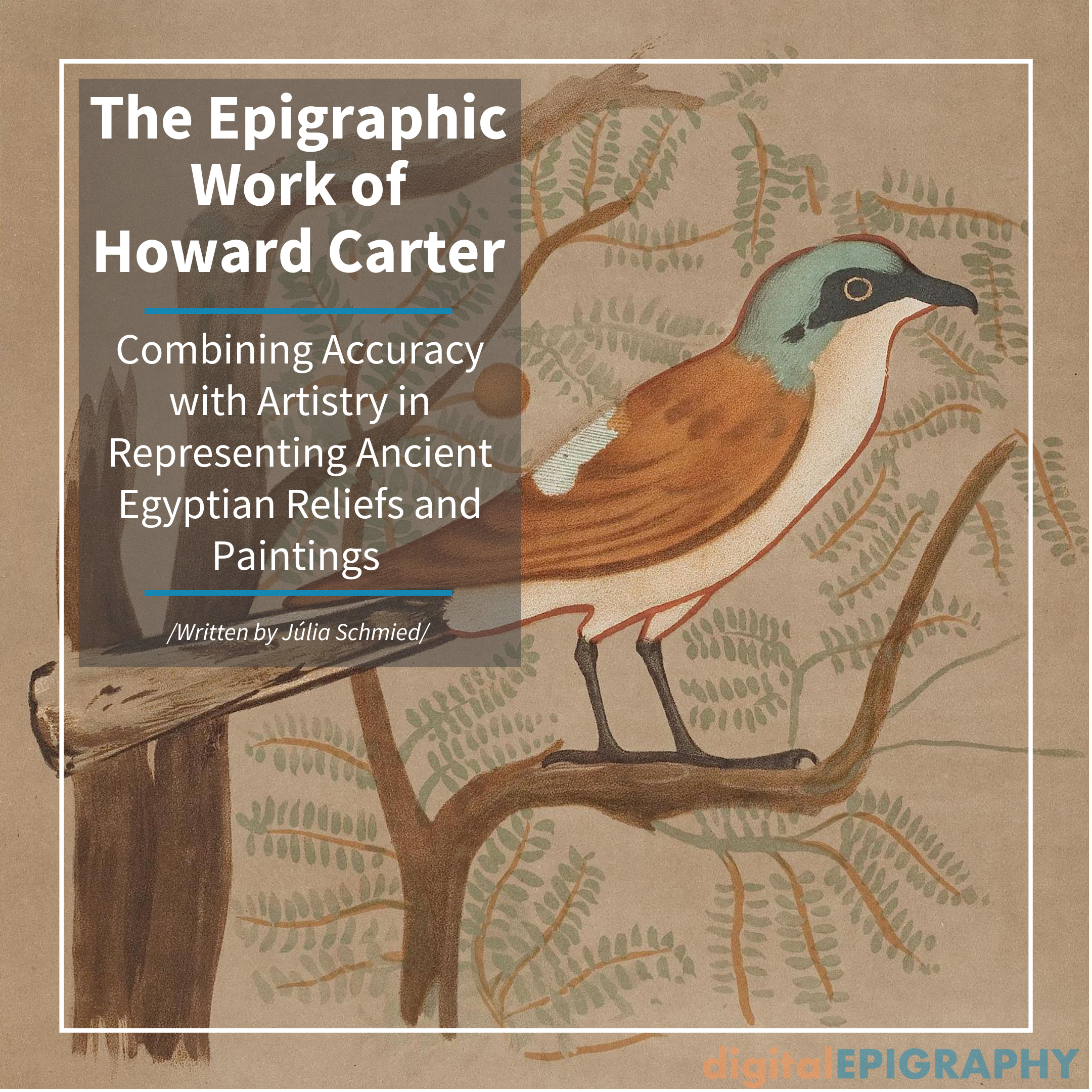The Epigraphic Work of Howard Carter
We would be remiss if digitalEPIGRAPHY did not commemorate Howard Carter in some way on the 100th anniversary of discovering the tomb of Tutankhamun, one of the most important milestones in the history of both Egypt and Egyptology.
In digitalEPIGRAPHY's latest entry discussing the evolution of epigraphy, Survey Egyptologist Júlia Schmied explores the exceptional but lesser-known achievements of Howard Carter, who began his career in Egypt at 17 when he was first appointed draughtsman for the Beni Hasan Mission of the Egypt Exploration Fund.
For Carter, throughout his somewhat short career as an epigrapher, the essential feature of Egyptian art was the “grace of line,” as T.G.H. James so fittingly phrased it in Howard Carter's Epigraphic Creed.
“Egyptian paintings and bas-reliefs are being copied for archaeological and Egyptological purposes more and more every day,” writes T.G.H. James, “and the majority of these copies are supposed to embody the principles, but they embody not one of them, merely serving, as far as measurement and notice of accident go, as accurate caricature, and bringing that ancient art into dishonour, by leaving out its soul. Why is this? Because the laws of dependence upon noble design, construction, form and beauty have not been perceived nor taken into account by the copyists."
Carter aimed to combine accuracy with artistry in representing ancient Egyptian reliefs and paintings – something of a novelty in his time but a principle that modern-day epigraphy still struggles to achieve at times.
This post was originally released as part of digitalEPIGRAPHY's growing Instagram collection. If you'd like to see our latest photos as soon as we post them, please follow us on Instagram.
Back to Gallery





